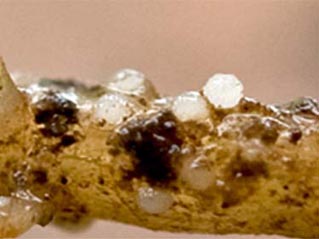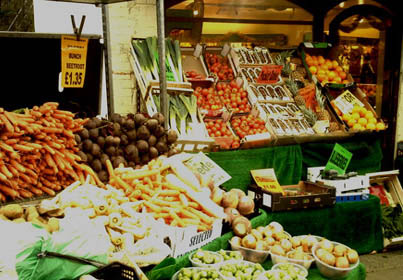Markets and nematodes
Plant-parasitic nematodes cause between $80 - $100 billion crop losses annually, and they are amongst the most difficult crop pests to control. Plant-parasitic nematodes are economically important pests of a range of staple crops including: wheat, maize, rice, sorghum, potato, soybean, peanut, bananas, sugar cane, sugar beet and other common vegetables such as tomatoes, beans, peppers, lettuce, carrots, and onions. They also affect cash crops including cotton, coffee, citrus and a wide range of amenity and ornamental plants.
Plant-parasitic nematodes can be broadly divided into two groups: ectoparasites which live outside the plant root and browse, and endoparasites which live within the root. The endoparasites can be further sub-divided into those which continually migrate within the root, the so called migratory endoparasites, and those which set up specialised feeding structures in the root and become sedentary, the so called sedentary endoparasites.
It is the sedentary endoparasites which are usually considered the most economically important group, with the cyst nematodes (Heterodera and Globodera spp.) being important in the cooler more temperate environments, and the root-knot nematodes (Meloidogyne spp) important in warmer more tropical areas. Climate change and reduced water availability is likely to increase the importance of plant nematodes and also have an effect on their current global distributions.

Potato Cyst Nematode is the most economically important pest in the UK and Northern Europe; seen here erupting through the root cortex 35 days post planting (image with permission Bonsak Hammeraas)



